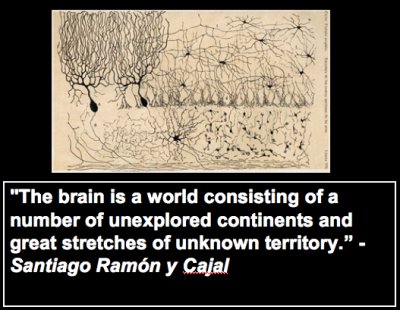Scope and Resolution in Neural Prosthetics and Special Concerns for the Emulation of a Whole Brain
Randal Koene, Ph.D.
page 5 of 5
Thus, a trade-off between the consequences of decoding and replicating is made at every level of modeling and prosthetics.  Even the decision of how much of a substrate should be emulated can have consequences. For instance, can you replace biological neurons with any other substrate as long as you maintain input/output relationships? How about the replication of the effects of temperature, oxygen and other chemicals on function?
Even the decision of how much of a substrate should be emulated can have consequences. For instance, can you replace biological neurons with any other substrate as long as you maintain input/output relationships? How about the replication of the effects of temperature, oxygen and other chemicals on function?
What we can do is choose a set of functions that we consider desirable or healthy. Of course, that raises the ethical issue that when you make those choices, it implies a possible difference between the original and prosthetic version of a patient’s mind. Still, when the alternative is disability or death, even a procedure that involves difficult choices may be better than no procedure at all.
In any case, the development of procedures will have to take into consideration the precision of replication and patient preference. Let us consider the issue of scope. When we think of scope, we often wonder if it is necessary only to emulate the higher functions of the brain or if the autonomic nervous system must be taken into account; or do we need to emulate the peripheral as well as the central nervous system?
This is actually probably a lesser issue. The greater issue is the quality of the interface with the system. The reason for this is if we already have a technical procedure that can handle data acquisition and emulation at the scale of the human brain, then changes on the order of magnitude that are involved in the inclusion or exclusion of the autonomic and peripheral nervous system are actually not that great. The quality of interaction may be the significant determinant.
Concluding Ethical Questions
Is personal identity an illusion? Is it an emergent quality of the human brain? Does continuity play a role? Does it matter at all if one is dead and alive again after a delay? Today, patients are frequently revived after a few minutes of being clinically dead. As a society, we hardly ever ask the question if the personal identity of such patients is preserved.
If the period between becoming deceased and revived is increased to several hours, as in proposed suspended animation, what happens to personal identity and what happens if the interval was years and the original body is lost?
If we do assume for a moment that personal identity is an emergent phenomenon of the mind, does that mean that it is alright to use destructive procedures to achieve whole brain emulation? What about a discontinuous procedure, such as when a person dies and the brain is fixated prior to data acquisition and whole brain emulation? Note that a destructive process does not necessarily imply a continuous one, such as when individual components are replaced one by one using nanotechnology. And if any revived personal identity implies preservation of the former personal identity, is it then okay to do that multiple times and to allow many revived copies to live simultaneously?

Image 8: A Final Thought
We may decide that there are objectives or socially responsible answers to those questions, or we may find that these issues amount to personal choice.
 Dr. Koene is with the Center for Memory and Brain at Boston University. His research has focused on the short-, intermediate- and long-term memory (STM, ITM and LTM) processes of the cortico-hippocampal loop.
Dr. Koene is with the Center for Memory and Brain at Boston University. His research has focused on the short-, intermediate- and long-term memory (STM, ITM and LTM) processes of the cortico-hippocampal loop.